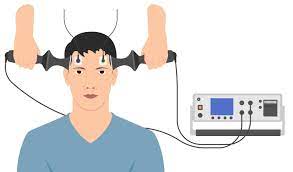Electroconvulsive Therapy (ECT)
 Electroconvulsive Therapy (ECT) is a medical procedure used to treat severe mental health conditions, particularly when other forms of treatment, such as medication and psychotherapy, have proven ineffective. ECT involves the controlled induction of a brief seizure by applying electrical currents to the brain.
Electroconvulsive Therapy (ECT) is a medical procedure used to treat severe mental health conditions, particularly when other forms of treatment, such as medication and psychotherapy, have proven ineffective. ECT involves the controlled induction of a brief seizure by applying electrical currents to the brain.
During an ECT session, the patient is under general anesthesia and receives a muscle relaxant to prevent convulsions from affecting the entire body. Electrodes are strategically placed on the scalp, and a carefully controlled electric current is administered, leading to a controlled seizure lasting about 20-60 seconds. The exact mechanisms underlying the therapeutic effects of ECT are not fully understood, but it is believed to impact neurotransmitter function and neural circuits, particularly those involved in mood regulation.
ECT is most commonly used to treat severe depression, bipolar disorder, and, in some cases, schizophrenia. It is generally considered when rapid symptom relief is essential, as in situations where a patient is at risk of self-harm or has not responded to other treatments.
Despite its effectiveness, ECT can have side effects, including short-term memory loss and confusion immediately following the procedure. However, these side effects are typically transient, and memory usually improves with time after completing the treatment course.
Modern ECT is administered with stringent safety protocols, and advancements in technology and medical understanding have reduced the potential for adverse effects. The number of treatment sessions required varies, but a typical course involves multiple sessions over a few weeks.
Before undergoing ECT, a comprehensive psychiatric evaluation is conducted to determine its appropriateness for the individual. Informed consent is a crucial aspect of the process, ensuring that the patient understands the potential risks and benefits.